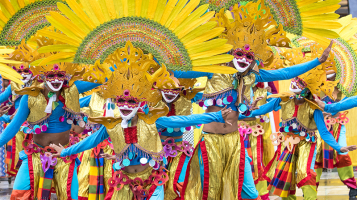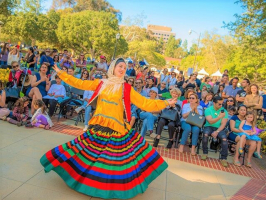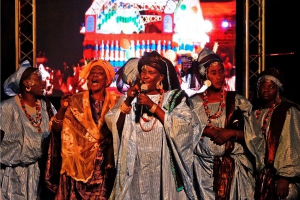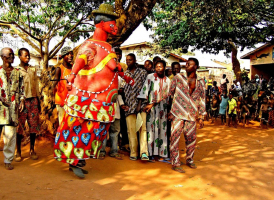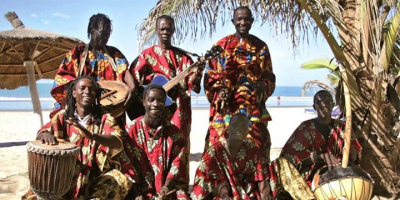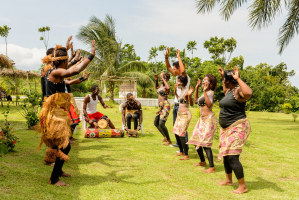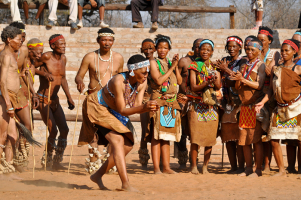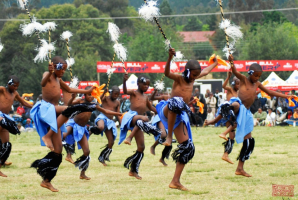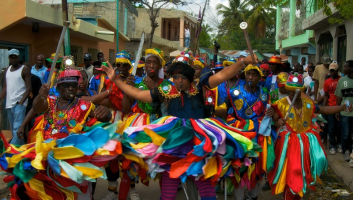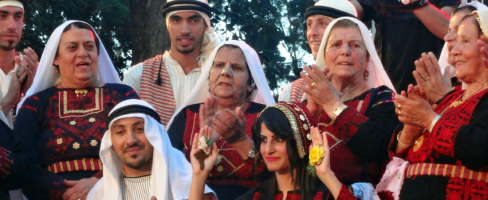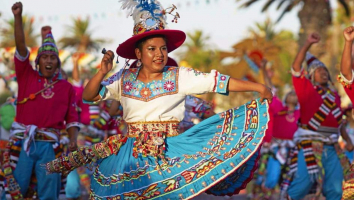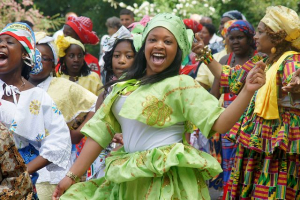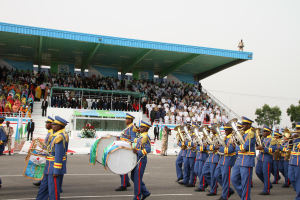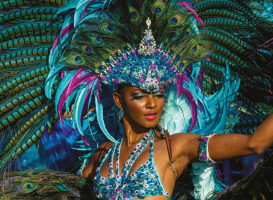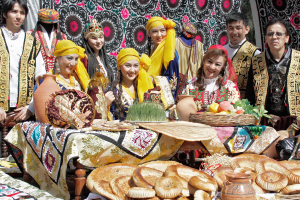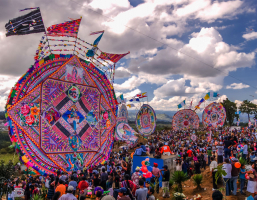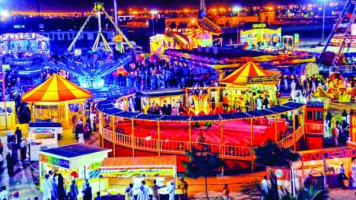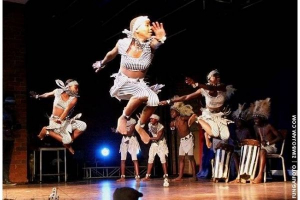Top 10 Most Famous Festivals in Laos
Laos, a Southeast Asian country, is famous for its antique temples and pagodas, as well as monthly traditional festivals, which you can attend regardless of ... read more...when you arrive. Festivals are one of the most distinctive and common ways of showcasing the beauty of local culture and assisting you in appreciating native customs and people. Most stores will be closed on these days to commemorate national holidays; yet, you will be immersed in a lively and bustling atmosphere everywhere. Let's have a look at the most famous festivals in Laos and discover which one you'll attend on your Laos vacation!
-
Bun Pha Wet is one of the most famous festivals in Laos. It is a religious celebration that takes place around the country on different days of the month each year. The Laotians will invite some of their close friends and relatives from other locations to celebrate the event with them at their homes.
This festival commemorates the Lord Buddha and his life story on several dates, staggered amongst villages, throughout the first month of the year. Prince Vessantara was the Lord Buddha, according to Lao mythology, and the provider of everything he possessed. The occasion is regarded as sacred because it is the most opportune time for Lao males to be ordained as monks. During the festival, Buddhist followers celebrate sacred ceremonies, prepare traditional food and enjoy a great time with their families and friends.
Time: in January – February
Venue: in the whole country
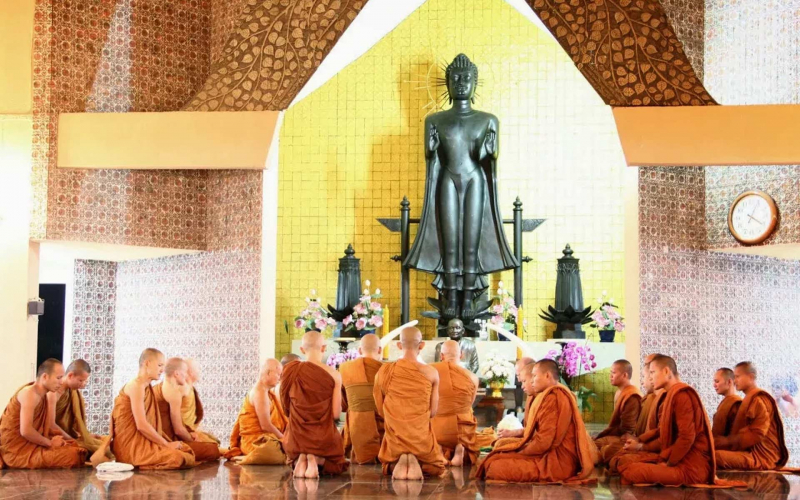
Photo: https://laostravel.com/ 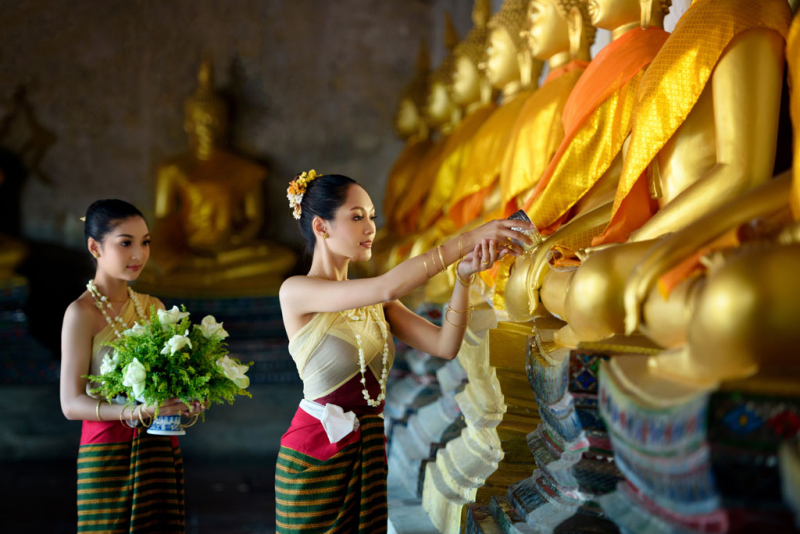
Photo: https://www.outlookindia.com/ -
This festival, also known as Magha Puja, is the second most famous Buddhist celebration in Laos, Thailand, Cambodia, Myanmar, and Sri Lanka. This day, also known as Sangha Day or Fourfold Assembly Day, recalls a moment when 1,250 Buddhists spontaneously gathered to pay their respects to the Buddha. Buddhists commemorate this day by burning oil lamps, visiting temples for special observances, chanting, meditation, and other Buddhist activities, all with the spiritual goal of doing only good things and purifying their thoughts.
Each temple across the country will hold a candlelight procession with incense and flowers in the evening, after which monks and congregation members will circle the Uposatha Hall three times clockwise to signify Buddhism's Three Jewels: the Buddha, the Dharma, and the Sangha. A series of meetings may be held by some Buddhist communities to discuss various topics of Buddhism.
This is also the time for the Vat Phou Festival in Champasak Province, which includes a speech and a procession showcasing the many districts' specialties (music, dances, and products) as well as their traditional attire.
Time: in February
Venue: in the whole country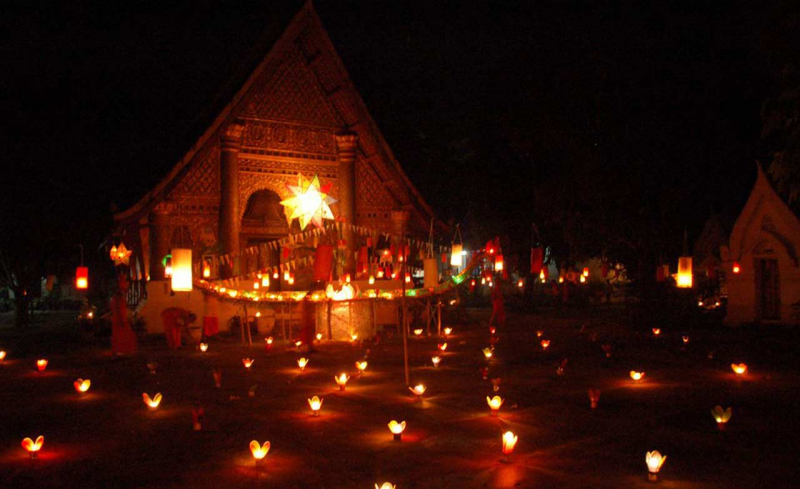
Photo: https://laostravel.com/ 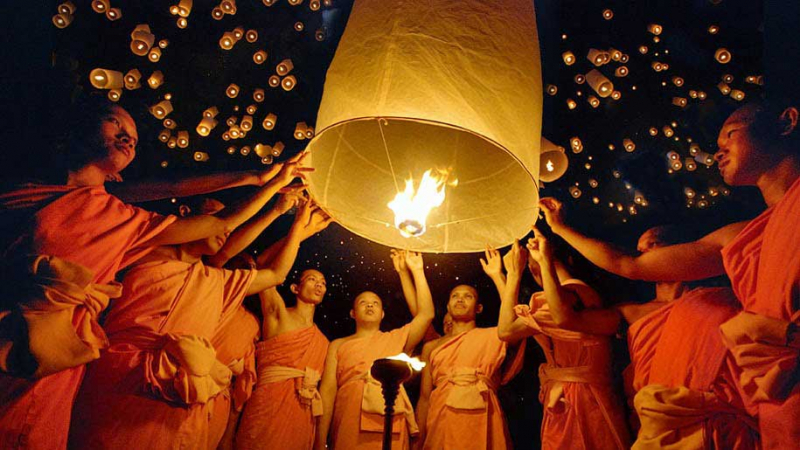
Photo: https://newwaytravel.com.vn/ -
Boun Khoun Khao is one of Laos' most prominent annual celebrations, reflecting the respect for a successful existence thanks to agriculture. The celebration is normally held in March, but the exact date is determined by the lunar calendar. If you visit Laos these days, the mournful atmosphere will overwhelm you as you witness traditional ceremonies in small communities and antique temples. The locals sitting around Pha Khuan – a big bunch of flowers in vibrant hues and imaginative adornment – waiting for the village patriarch to be put on their wrists by a white rope and prayed for happiness is the symbolic image of this occasion.
During the ceremony, a village elder wraps white cotton strings around the wrists of the attendees and prays for their happiness. Many delicacies, including deep-fried Mekong fish, papaya salad, and rice wine, are served on celebratory days to demonstrate gratitude to nature and the Mekong River for providing abundant crops to the people. Following the rites, participants will participate in thrilling and engaging activities such as dancing and singing to traditional music.
Time: in March
Venue: in the rural parts of Laos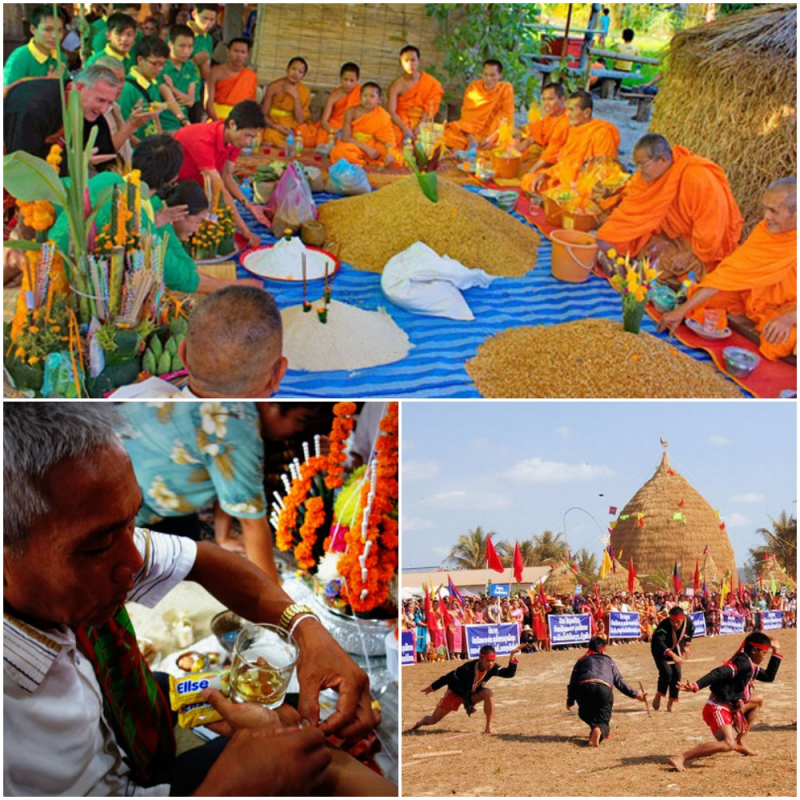
Photo: https://laostravel.com/ 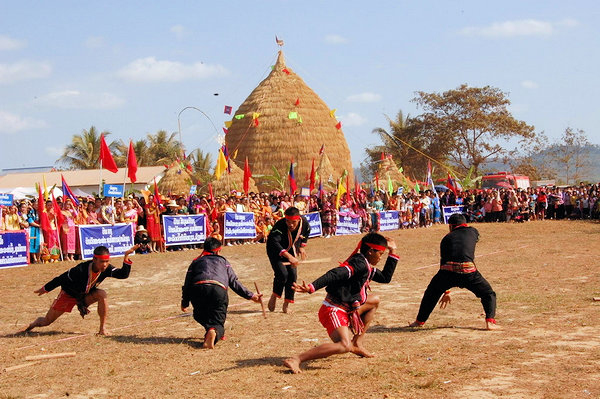
Photo: https://www.thegtrider.com/ -
The Lao New Year Festival takes place every year in mid-April and lasts three days (approximately 13-15 April), however, it generally lasts a week. Houses are cleaned and Buddha images are washed with holy water during this festival, which is very important to the Lao people. People dress up, visit temples to make offerings, and witness colorful parades in the cities, particularly in Luang Prabang and Vientiane. The festival's highlight is the water throwing, which Laotians believe would wash out the old spirits and usher in the New Year. When planning a vacation during this season, be prepared to be drenched with water and flour in the streets by strangers.
Because it is one of the country's public holidays, most workplaces, restaurants, and schools will be closed during this time, and visitors and transfers will be limited due to the crowds. The famous festival, on the other hand, makes this one of the greatest times to visit Laos.
Time: in mid-April
Venue: in the whole country
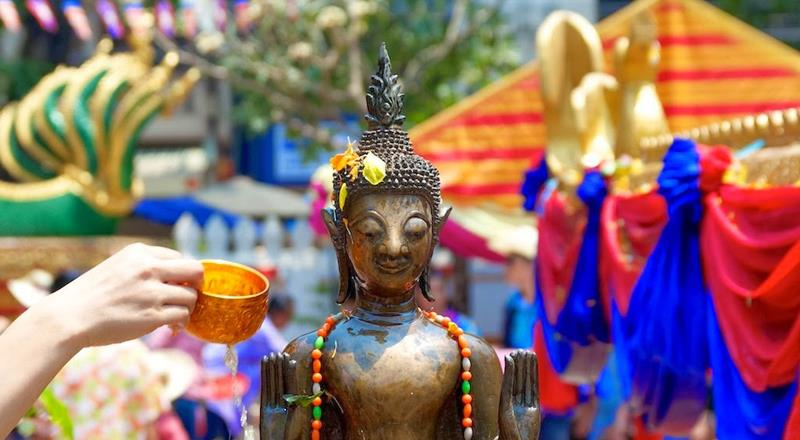
Photo: https://hiasia.xyz/ 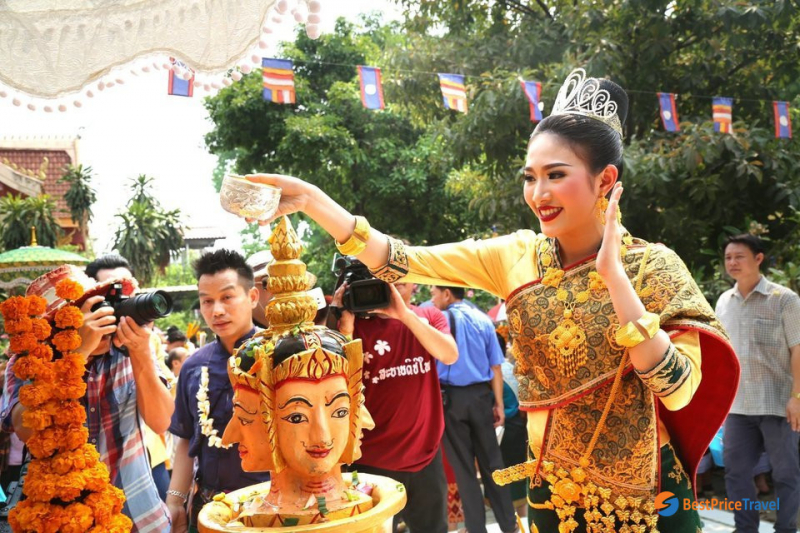
Photo: https://www.bestpricetravel.com/ -
Boun Visakha Bu Saar recalls the honorable speech made to 1250 enlightened monks who traveled to see Buddha without being summoned from other parts of the world. This is also one of the Buddhist festivals, celebrating Buddha's birth, enlightenment, and death. Visitors will be able to witness chanting and sermonizing at night, followed by spectacular candlelight processions, on the 6th lunar month's day.
Time: in May
Venue: in the whole country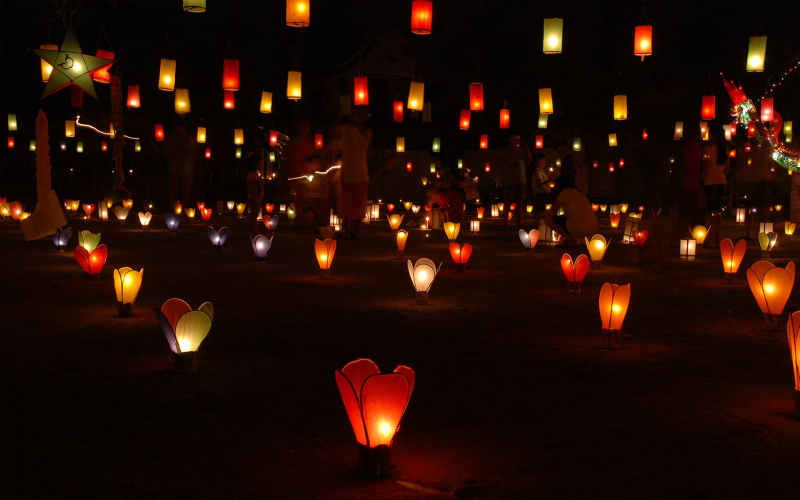
Photo: https://laostravel.com/ 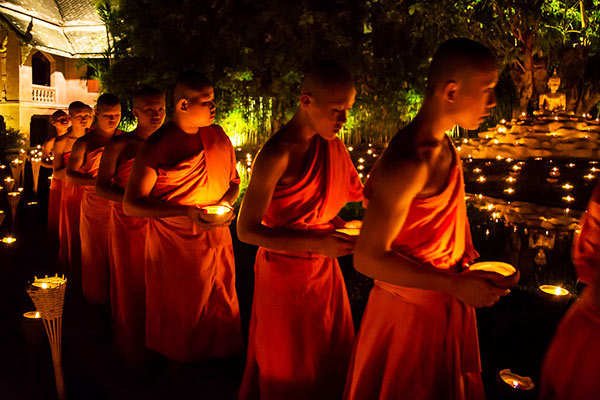
Photo: https://www.indochinatour.com/ -
Boun Bang, which originated as a rain festival and is now held on the same day as Viisakha Puja, is known as one of the most famous festivals in Laos. Preparing for the ceremony, which will be attended by members of many communities, could take several weeks. Throughout the celebration, there will be a vibrant image of locals dressed in bright traditional clothing singing and dancing joyfully. The most notable activity is the launch of a bamboo-made missile to pray for good fortune, health, happiness, and rain. It is said that the higher the missile flies, the greater the luck, therefore you will be drawn in by the thrilling clamor from the festival attendees once the missile is launched.
Visitors will have a fantastic experience witnessing the most adorned and high-flying handmade rockets and fireworks going into the sky to call for good rain amid much chanting and merrymaking. Aside from the joyful events, all of the visitors are provided a variety of delectable traditional delicacies.
Time: between May and September
Venue: in various villages in the country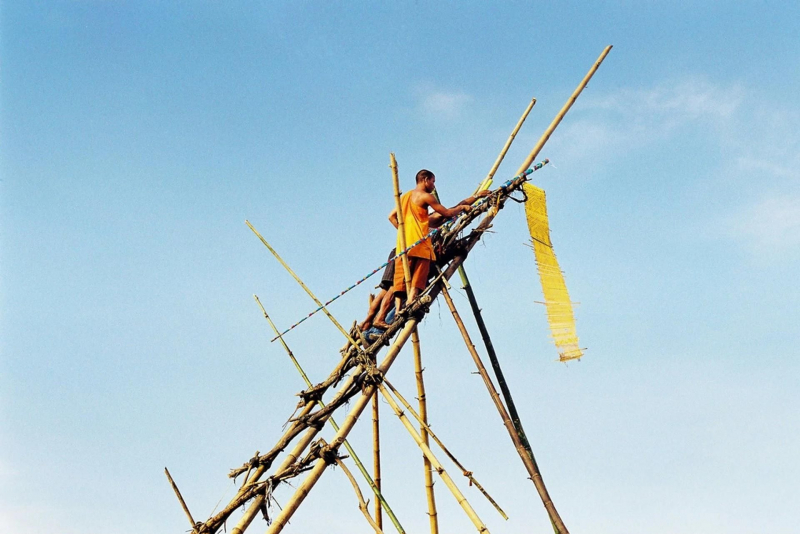
Photo: https://rove.me/ 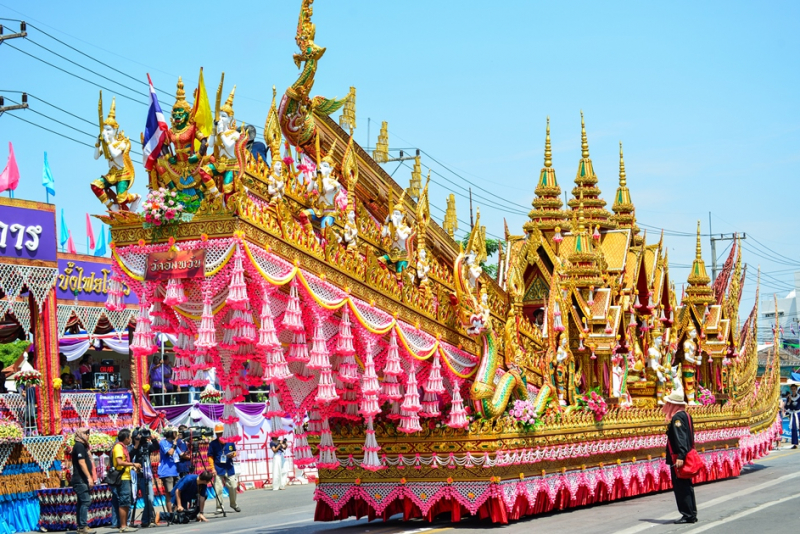
Photo: https://www.asiadmc.com/ -
The Khao Phansa festival marks the start of Buddhist Lent, which lasts for about a month and a half and begins the day following the full moon of the eighth lunar month, which is usually in July. In Laos, this is the traditional three-month rain retreat known as "Phansa." There are no weddings or gatherings except religious ones during this time, and Buddhist monks stay in their temples to study the Buddha's teachings and meditate. Except in exceptional circumstances, they are not permitted to travel and remain overnight outside of their temples; nonetheless, the leave length cannot exceed seven days.
Khao Phansa is traditionally the season for Buddhist young men to enter monkhood, where they receive spiritual training to obtain virtue for themselves and their parents. It is believed that a guy who has been a monk will lead their parents to paradise as a sign of purity and contentment.
People frequently prepare food and other necessities for the monks on this occasion. During this season, most temples are highly busy as many people come to make merit, donate, and receive blessings.
Time: between July and October
Venue: in the whole country
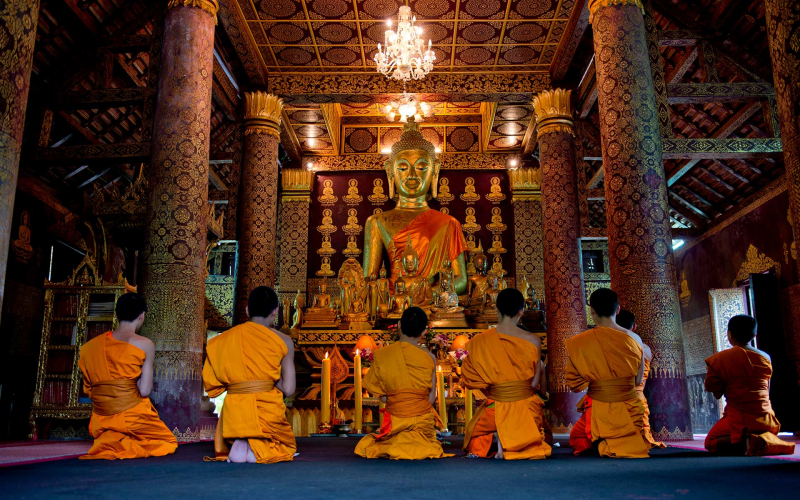
Photo: https://laostravel.com/ 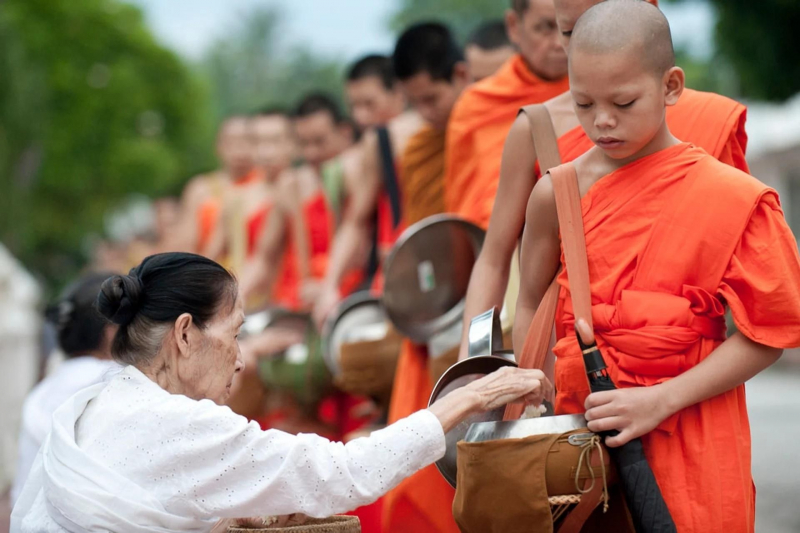
Photo: https://rove.me/ -
For the remembrance of the fallen, the Khao Salak festival is held on the 10th full moon of the lunar calendar. Lao people will visit temples and present contributions to the monks, including a piece of paper containing ancestor stories that will be read aloud. This festival is meant to appease the spirits and ensure that they sleep soundly. Longboat races, traditional Lao music and dances, and trade fairs for local agricultural products and handicrafts are also held during this time.
Laos also offers gifts for the deceased who have no living family to remember them, such as food and money. All spirits can rest comfortably and not annoy those who remain on Earth as a result of this.
Time: in September
Venue: in the whole country
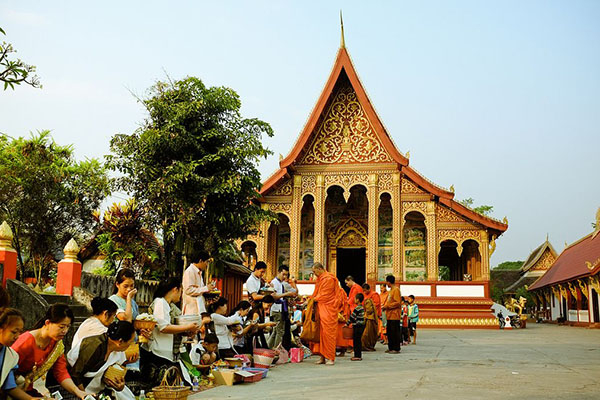
Photo: https://www.golaos.tours/ 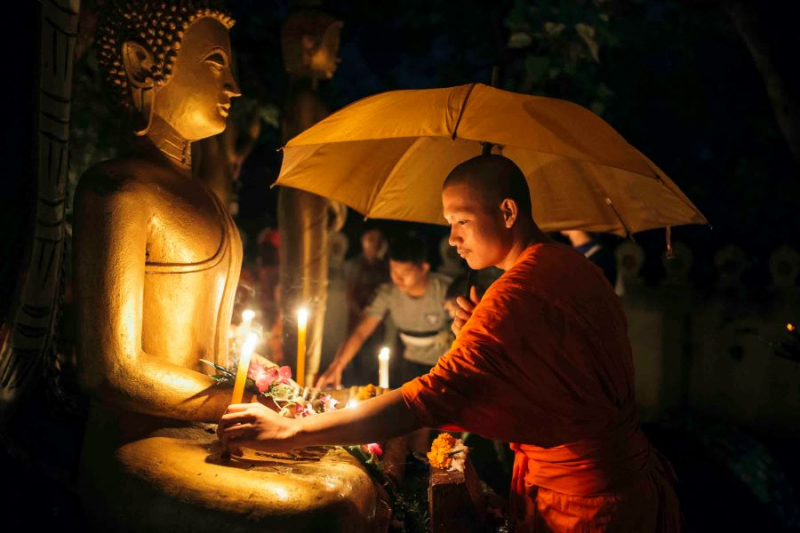
Photo: https://passionasiatravel.com/ -
After three months of retreat, the monks return to their daily social activities at Boun Ok Phansa, which marks the end of Buddhist Lent. This is also a national public holiday in Laos, which occurs around the conclusion of the rainy season in October. During this time, devotees assemble at temples across the country to deliver money and offerings in spectacular lighted processions staged in the evening.
Hundreds of colorful floats containing flowers, incense, candles, food, and even money are then sent down the Mekong River, which means Mother of Any Things, with prayers to wash away all negativity. In Vientiane, this is also the season to enjoy fantastic boat racing festivals along the Mekong River.
Time: in October
Venue: in the whole country
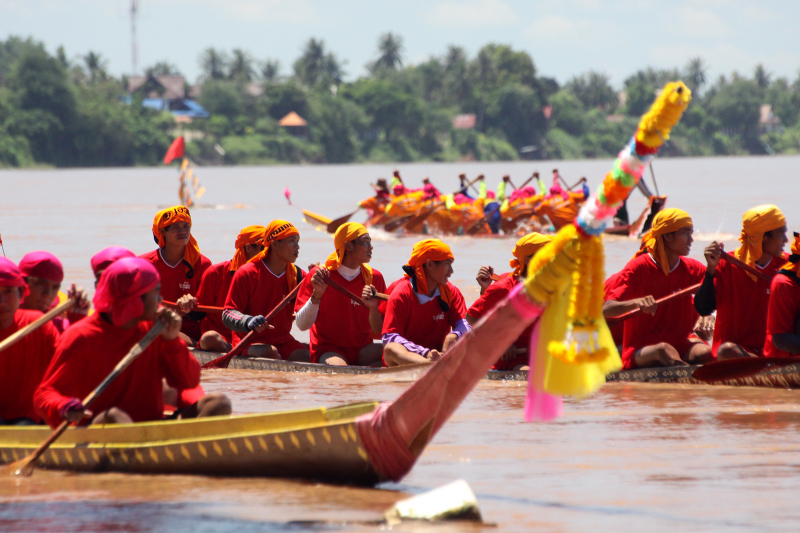
Photo: https://newwaytravel.com.vn/ 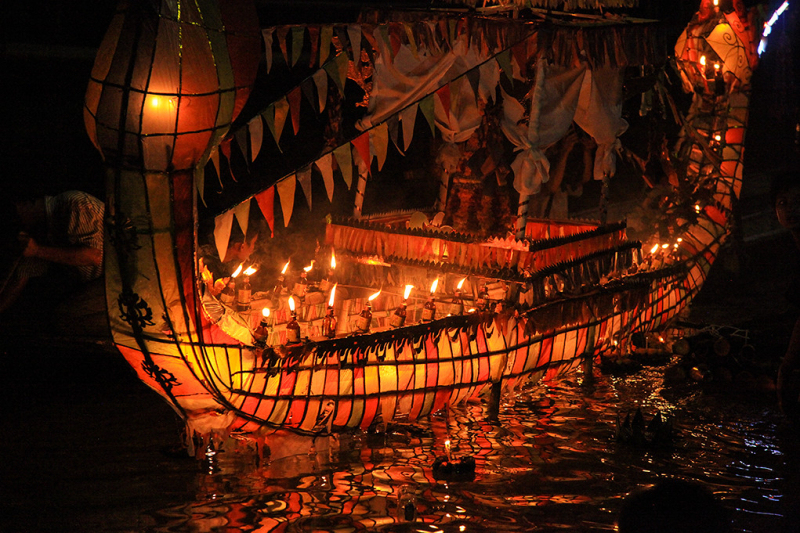
Photo: https://www.flickr.com/ -
That Luang festival is the last of the most famous festivals in Laos. It takes place in November and brings a large number of national and international tourists to That Luang (Vientiane), Laos' oldest temple, is one of the country's most important national festivals. This three-day celebration takes place in November at That Luang Stupa, Laos' national emblem, during the full moon.
These days, Buddhists from all over the country gather at Wat Si Muang, an ancient temple in Vientiane, to join the procession to That Luang, presenting sacrifices to the monks in the hope of having a better life in the next incarnation. People carrying incense and candles go three times around the temple to pay devotion to Buddha. In addition, numerous remarkable music and dancing performances highlight the Laotian community's artistic, religious, and cultural values.
Time: in November
Venue: in That Luang Stupa of Vientiane
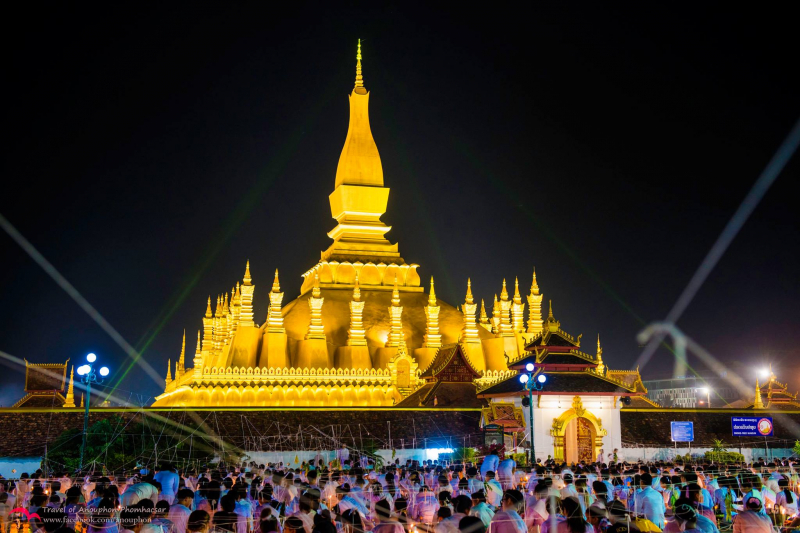
Photo: https://www.hanoijourney.com/ 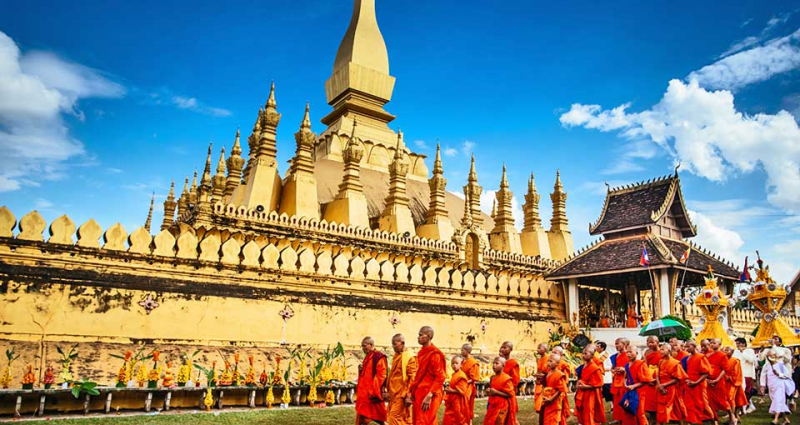
Photo: https://threeland.com/












